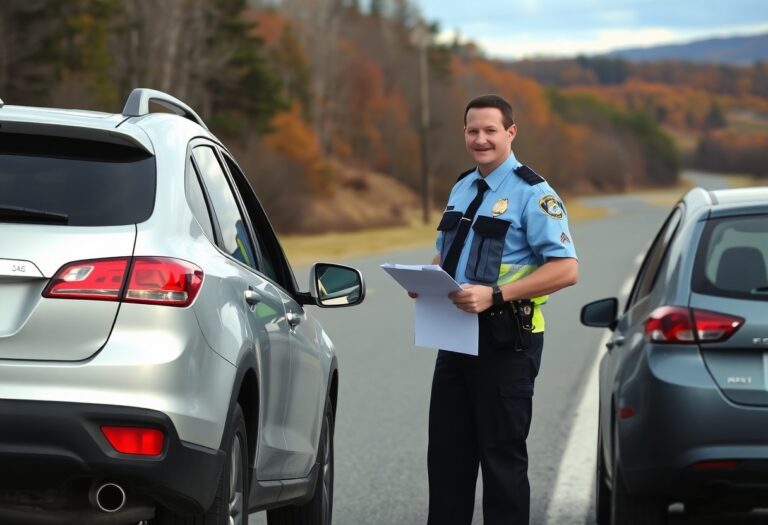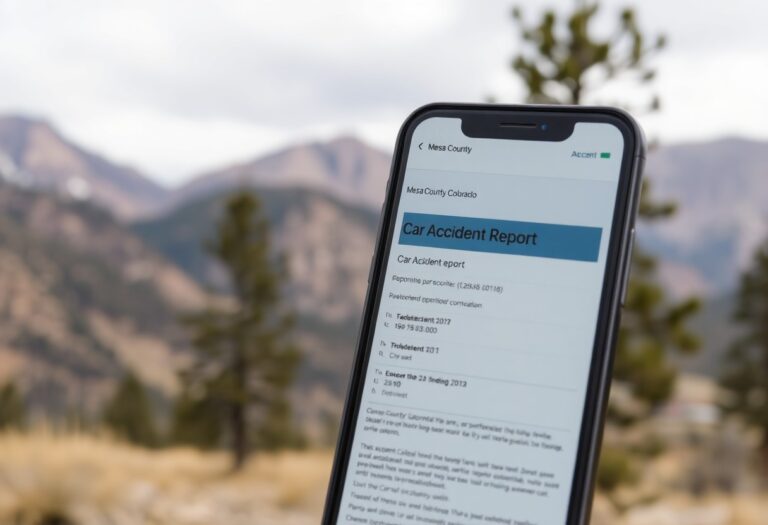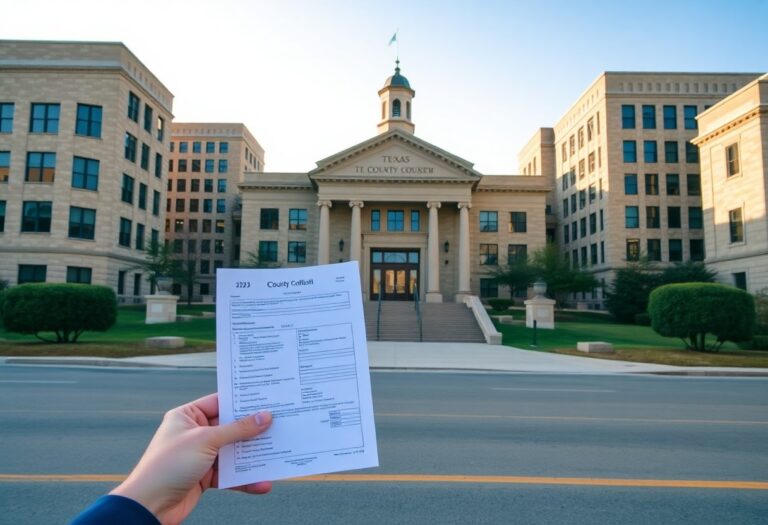Most car accidents can be overwhelming, leaving you with numerous questions and concerns. In this guide, you will learn how to effectively obtain car accident reports in Ellis County, Texas, ensuring you have the important documentation needed for insurance claims and legal processes. Understanding the local procedures and required information will help you navigate this experience with greater ease and confidence. Follow these steps to streamline the process and get the information you need promptly.
Navigating the Legal Landscape of Car Accident Reports
Understanding the Importance of Accident Reports
Accident reports serve as an official record of the incident, detailing vital facts such as the time, location, and parties involved. These documents can play a pivotal role in your claims process, as they provide a foundational reference for insurance companies and legal professionals. In disputes over liability, the information recorded by law enforcement can significantly influence the outcome, ensuring that you have a reliable source to substantiate your account of events.
Legal Framework Governing Report Access in Texas
In Texas, access to car accident reports is governed by the Texas Transportation Code and Public Information Act. Generally, only involved parties and their insurance companies can request copies of the report, while others may need to petition for access. It’s vital to understand the specific guidelines set forth by local authorities in Ellis County, as procedures and associated fees may vary, affecting how and when you can obtain these documents.
The Texas Transportation Code specifically outlines that accident reports are available to individuals directly involved in the crash or to their legal representatives. If you are seeking access as an interested party, such as a witness or a family member of someone injured, you may need permission from the involved parties or a valid legal basis. Requests for reports may also incur a small fee, and typically, you must provide specific details like the date of the accident and the names of those involved to streamline the process. Always check with the Ellis County local authorities for the most accurate procedures and regulations.
Step-by-Step Process to Request Your Accident Report
| Step | Description |
|---|---|
| 1 | Identify the Correct Reporting Agency |
| 2 | Choose Request Method: Online or In-Person |
| 3 | Gather Required Documentation and Fees |
Identifying the Correct Reporting Agency
Locating the agency that filed your accident report is necessary. Typically, this is either the local police department or the county sheriff’s office. If the accident involved a state highway, the Texas Department of Public Safety might be the reporting agency. Ensuring you’re contacting the right entity will expedite the retrieval process.
Formal Request Procedures: Online vs. In-Person
You can request your accident report through online systems or by visiting the relevant agency in person. Online platforms are generally swift, allowing you to complete the request from home. In-person requests can provide direct assistance but may require waiting in line.
Online methods often include filling out a form, entering incident details, and paying any applicable fees through secure platforms. On the other hand, visiting in person allows for immediate feedback and clarity on any questions related to your report. Be sure to check the agency’s website for specific instructions whether you opt to request online or in person for a smoother experience.
Required Documentation and Fees
When requesting your accident report, specific documentation may be necessary, including your driver’s license, case number, and accident details. Fees for the report typically range from $6 to $15, depending on the agency’s regulations and the format of the report.
Gathering your documentation beforehand ensures a seamless process when submitting your request. Fees may vary, and some agencies offer electronic versions of the report at a reduced cost. Always verify the total amount and acceptable payment methods, whether you are paying online or in person. Having the correct information and payment ready can save you time and effort in obtaining your report.
Decoding the Contents of Your Accident Report
Your accident report may seem overwhelming at first glance, but it’s designed to provide a comprehensive overview of the incident. Familiarizing yourself with the report elements allows you to understand the circumstances surrounding your accident better. Key details like time, date, location, and parties involved offer context, while witness statements and diagrams illustrate the scene. Moreover, any referenced violations or citations can influence liability determinations and impact settlement negotiations in the future.
Key Elements to Look For: What Matters Most
Focus on specific sections of the report that highlight collision details and injuries sustained, as these directly relate to your case. The narrative section provides insight into how the accident occurred, which can be vital for any legal responsibilities. Also, note the insurance information of each party involved, which is key for claims processing. Ensuring accuracy in these sections lays the groundwork for any future discussions regarding liability and damages.
Common Errors in Reports and How to Address Them
Errors in accident reports can significantly impact your case, whether it’s incorrect names, dates, or misleading descriptions of the accident. It’s necessary to scrutinize your report for discrepancies and follow specific steps to address them. Obtain copies for all parties involved and maintain a detailed record of any conversations regarding the errors and responses from law enforcement, making sure all corrections are officially documented.
In cases where inaccuracies are found, contact the relevant law enforcement agency promptly to request amendments. If an officer made a misstatement, provide evidence such as photographs or eyewitness accounts to support your claim. Make sure to obtain a corrected copy of your report after changes and keep it handy for insurance claims or legal proceedings. Keeping detailed notes on how and why discrepancies arose can also aid your case, ensuring you present your information clearly and accurately should the need arise.
Timelines and Expectations: What to Know
Understanding the time frame associated with obtaining your car accident report in Ellis County is necessary for effective planning. This insight can help when coordinating medical treatment or legal representation, minimizing potential delays in your proceedings.
Average Processing Times for Requests
The typical processing time for accident report requests in Ellis County is around 5 to 10 business days. However, in some cases, you might receive your report sooner, especially if requested online or in person. Always check for the latest updates as processing times may vary based on the volume of requests.
Factors That May Delay Report Access
Several factors can influence the speed at which you receive your accident report. High demand periods, ongoing investigations, or inaccuracies in the initial reporting may all contribute to delays. If your report requires additional verification or approvals from supervisors, it can take even longer.
- High demand periods
- Ongoing investigations
- Inaccuracies in reporting
- Scheduling conflicts
Reports with ongoing investigations often face extended timelines due to the complexities involved. Law enforcement may need to clarify details or consult with multiple parties before finalizing the document. Additionally, scheduling conflicts surrounding holidays and weekends can impact response times, causing unforeseen delays. Recognizing these variables can help you set more realistic expectations.
- Complexity of the accident
- Legal requirements
- Filing method
In cases involving serious injuries or fatalities, your report may undergo meticulous scrutiny, extending the processing duration. Legal requirements surrounding obtaining the report, particularly for parties involved, can also affect access. In the final account, recognizing these factors can assist you in navigating the request process with greater ease.
Insider Tips for Ensuring Accurate Reporting
To ensure accuracy in your car accident report, follow these insider tips. Document the scene immediately with clear photographs. Obtain contact information from witnesses and collect their statements. Always double-check the details in the report once it’s filed, noting any discrepancies. Don’t hesitate to request a correction if inaccuracies arise. Finally, keep a personal log of events, including dates and times, to support your claims. The more thorough your documentation, the smoother the process will be.
How to Gather and Present Supporting Evidence
Gathering and presenting supporting evidence involves being systematic and meticulous. Start by collecting photographs of the accident scene, vehicle damage, and injuries. Obtain witness statements as corroborative evidence. Medical records can substantiate injuries, while police reports provide an official narrative. Organize these materials chronologically to enhance clarity during discussions with law enforcement or insurance adjusters. Always ensure that you document the chain of custody for crucial evidence to maintain its integrity.
Engaging with Law Enforcement for Clarity and Corrections
Engaging with law enforcement to clarify or correct your accident report should be straightforward. Start by contacting the police department that handled your case. Prepare to provide your incident report number alongside your contact information. Clearly state the inaccuracies you have identified, supporting your claims with documented evidence. Most departments are receptive to correcting errors, as accurate reporting benefits everyone involved.
When interacting with law enforcement, approach them respectfully to foster a positive dialogue. Bring along any supporting documents, like photographs or witness statements, that reinforce your perspective. Officers appreciate when you can point to specific sections in the report that demand attention. Some police departments offer online portals to submit correction requests, which can expedite the process. Being proactive and organized can lead to significant improvements in your accident report’s accuracy, ensuring it reflects the incident truthfully.
Final Words
The process of obtaining car accident reports in Ellis County, Texas, is straightforward if you follow the appropriate steps. By knowing how to access these documents through the local law enforcement agencies and understanding any associated fees, you can efficiently acquire the information you need for personal or legal purposes. Being informed about your rights and the resources available to you can make this process smoother and more efficient, ensuring you have the proper documentation at your disposal when needed.













